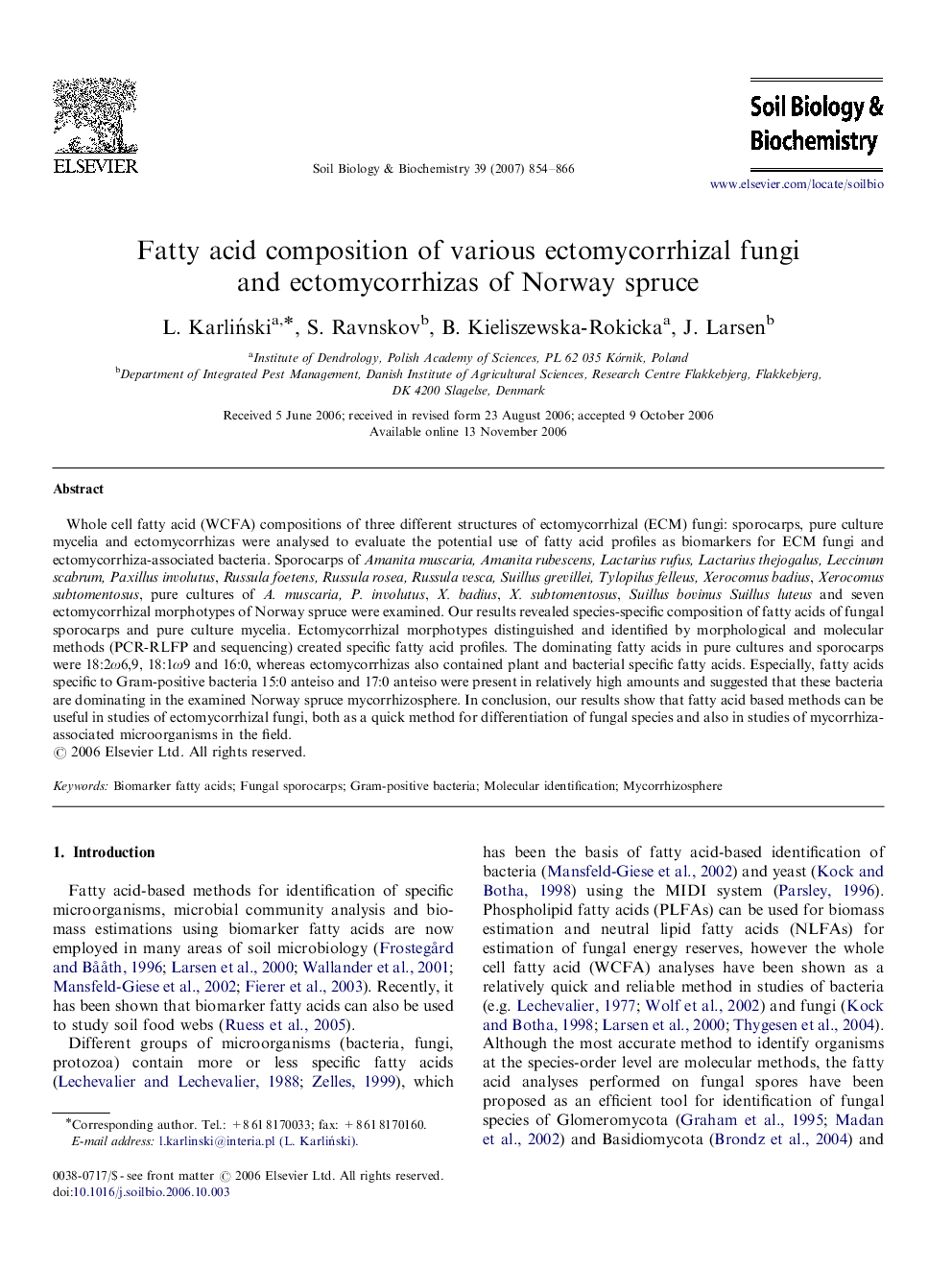| Article ID | Journal | Published Year | Pages | File Type |
|---|---|---|---|---|
| 2026357 | Soil Biology and Biochemistry | 2007 | 13 Pages |
Whole cell fatty acid (WCFA) compositions of three different structures of ectomycorrhizal (ECM) fungi: sporocarps, pure culture mycelia and ectomycorrhizas were analysed to evaluate the potential use of fatty acid profiles as biomarkers for ECM fungi and ectomycorrhiza-associated bacteria. Sporocarps of Amanita muscaria, Amanita rubescens, Lactarius rufus, Lactarius thejogalus, Leccinum scabrum, Paxillus involutus, Russula foetens, Russula rosea, Russula vesca, Suillus grevillei, Tylopilus felleus, Xerocomus badius, Xerocomus subtomentosus, pure cultures of A. muscaria, P. involutus, X. badius, X. subtomentosus, Suillus bovinus Suillus luteus and seven ectomycorrhizal morphotypes of Norway spruce were examined. Our results revealed species-specific composition of fatty acids of fungal sporocarps and pure culture mycelia. Ectomycorrhizal morphotypes distinguished and identified by morphological and molecular methods (PCR-RLFP and sequencing) created specific fatty acid profiles. The dominating fatty acids in pure cultures and sporocarps were 18:2ω6,9, 18:1ω9 and 16:0, whereas ectomycorrhizas also contained plant and bacterial specific fatty acids. Especially, fatty acids specific to Gram-positive bacteria 15:0 anteiso and 17:0 anteiso were present in relatively high amounts and suggested that these bacteria are dominating in the examined Norway spruce mycorrhizosphere. In conclusion, our results show that fatty acid based methods can be useful in studies of ectomycorrhizal fungi, both as a quick method for differentiation of fungal species and also in studies of mycorrhiza-associated microorganisms in the field.
